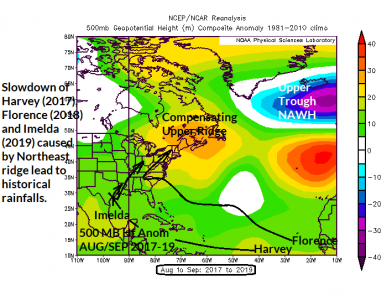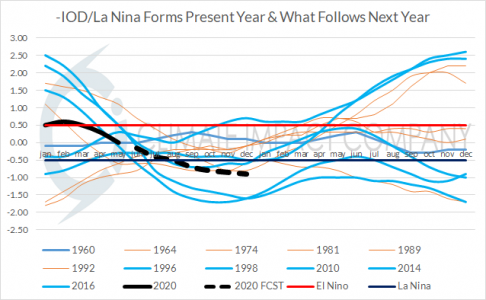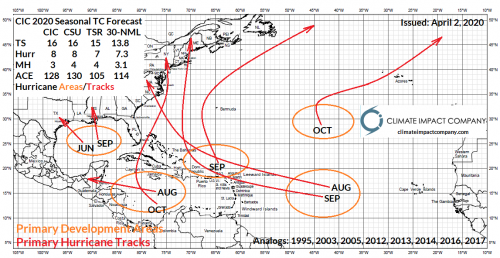05/31/2020, 2:19 pm EDT
Important to seasonal prediction of North Atlantic tropical cyclone activity is the evolution in recent years of the North Atlantic Warm Hole and the attendant upper air pattern. During the tropical cyclone season a persistent upper level trough has formed in the cooler atmosphere across the NAWH compensated for by a persistent upper ridge over Quebec (and vicinity). When the upper ridge is present as tropical cyclones go inland the U.S. coastline storms slow down and produce excessive rainfall similar to Harvey (2017), Florence (2018) and Imelda (2019). A similar dynamic is expected for AUG/SEP 2020.
![Climate-Impact-Company-logo-sm[1]](https://climateimpactcompany.com/wp-content/uploads/2023/08/Climate-Impact-Company-logo-sm1.png)


